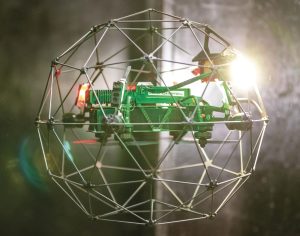In recent years, the industrial landscape has witnessed a remarkable transformation in safety practices, courtesy of an unlikely contender drones. These unmanned aerial vehicles, originally developed for military purposes, have found an innovative and impactful role in revolutionizing industrial safety through enhanced inspection practices. Traditional methods of industrial inspections, often involving manual labor or using heavy machinery, posed significant risks to workers’ safety and were often time-consuming and costly. Enter drones, which have ushered in a new era of efficiency and risk reduction. Equipped with advanced imaging technology, such as high-resolution cameras, thermal sensors, LiDAR, and even gas detection tools, drones are now capable of conducting comprehensive and accurate inspections across various industrial sectors. One of the most prominent applications of drones in industrial safety is their role in infrastructure inspections. Power lines, pipelines, and cell towers, previously requiring teams of workers to scale heights and navigate hazardous environments, can now be thoroughly inspected by drones.

By minimizing human involvement in risky scenarios, drones inherently decrease the likelihood of accidents and injuries. Moreover, drones have demonstrated their prowess in enhancing safety within the energy sector. Oil and gas facilities, with their intricate equipment and potentially hazardous surroundings, demand frequent inspections to prevent leaks, monitor emissions, and ensure equipment integrity. Drones equipped with gas sensors can detect leaks swiftly and accurately, reducing the risk of environmental contamination or even catastrophic accidents. These inspections can be carried out more frequently and with greater precision, minimizing downtime and maximizing operational efficiency. Drones have also found a vital role in industrial sectors such as manufacturing and construction. In manufacturing plants, drones can assess the condition of machinery, detect wear and tear, and identify potential malfunctioning components, allowing for predictive maintenance. In construction, drones can monitor work progress, assess site safety, and generate detailed 3D models for analysis, reducing the need for workers to navigate potentially hazardous construction sites.
Furthermore, the data collected by drones during inspections holds immense value. Advanced data analytics and machine learning algorithms can process the gathered information, identifying patterns and anomalies that might be imperceptible to the human eye. This predictive capability enables industries to implement proactive measures, preventing potential safety breaches before they escalate into critical incidents and read more here https://atslab.com/camera-inspection/industrial-drone-inspection/ . Despite these advantages, the integration of drones into industrial safety practices does come with challenges. Regulatory hurdles, privacy concerns, and the need for specialized training to operate drones proficiently are areas that need to be addressed. Nevertheless, as technology continues to evolve, these challenges can be managed through collaboration between regulatory bodies, industries, and technology providers. In conclusion, drones have ushered in a new era of industrial safety by transforming inspection practices. Their ability to access challenging environments, capture high-quality data, and conduct accurate assessments while minimizing human risk has made them invaluable tools across various sectors. As industries continue to harness the potential of drones and advancements in technology pave the way for even more sophisticated capabilities, the positive impact on safety, efficiency, and cost-effectiveness is set to become even more pronounced.
